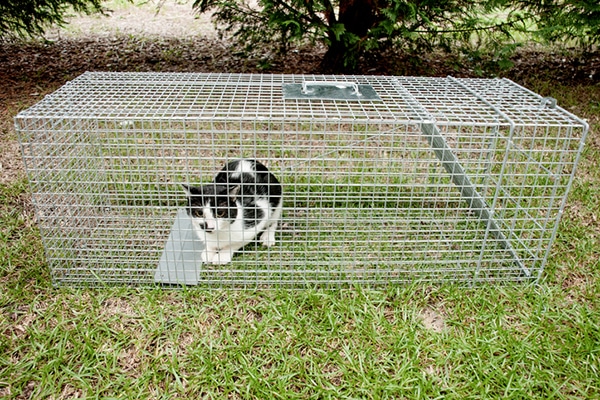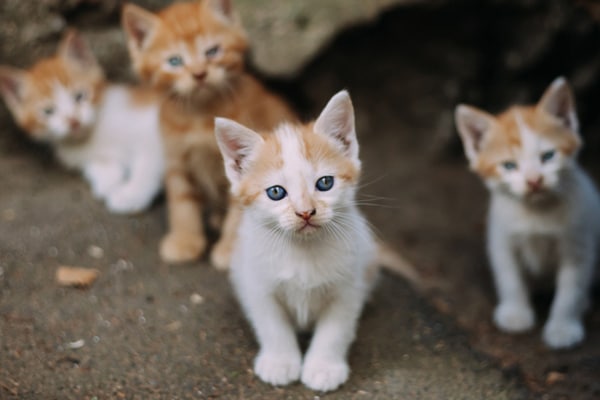Recently, natural disasters have mobilized animal-loving citizens across the country. That’s epic, but there are cats in every community that need help every day. Feral cats, aka “community cats,” are those un-owned cats who do not want to live indoors but depend on people nonetheless. From Florida to California, and everywhere in between, community cats rely on Trap-Neuter-Return (TNR) volunteers. TNR helps these community cats in a variety of ways: preventing overpopulation by spaying and neutering, providing food/water/medical services, providing shelters, reducing nuisance calls to animal control and, ultimately, keeping cats out of the shelter system.
True feral cats are not socialized with people and are unable to be adopted into loving homes. Over 850,000 cats are still dying in shelters each year, many of them community cats. Getting involved in TNR is the best way to help cats and people. And guess what? It’s easier to get involved in TNR than you think.
Reasons to get involved in TNR

In 2009, Gary Haun of Tampa, Florida, heard a knock on his door. It was a Humane Society of Tampa Bay’s TNR trapper asking if he could help round up the cats in his neighborhood. “They saw my cat and thought I might be helpful.” He helped get Nicki, a tuxedo kitten, neutered and adopted. Haun also helped 17 other cats whom he looked after as a colony, supplying food, water and even additional TNR, when more cats showed up. Gary finds the moment when a feral cat accepts a loving touch as the greatest reward of TNR.
Twenty-five years ago, Kris Neal of St. George, Utah, built a new house and was surprised at what she saw: cats everywhere! She bought a few humane traps and got the community cats of her neighborhood fixed on her own dime. When the need exceeded her means, she reached out for help. Best Friends Animal Society and a farm association helped her get mass trappings underway. In addition, she worked with her local government to adopt a TNR ordinance. “Overcoming objections with facts and with authority is key,” says Neal. “We have a PowerPoint presentation we show HOAs, apartments and business complexes that really helps.” The local shelter hasn’t killed any cats for almost 10 years thanks to TNR organizations like One More Chance, the group Neal started and now volunteers for. “The first cat I trapped, I was hooked,” she says. “At that moment, I knew with certainty that this is the road to no kill.”
TNR is easy to do
Joe Federico of Los Angeles, California, got involved in a similar fashion. While his neighbor was remodeling a shed, 16 unfixed cats suddenly showed up in his backyard. Someone called FixNation and Joe worked with the TNR organization to get all the cats fixed. “It took four weeks to get them under control,” says Federico. “The whole process was so positive — the veterinarians, the vet techs and all the volunteers came together to help.” After his group of cats were fixed, he became a volunteer with FixNation full time.
One of the aspects of TNR that resonated most with Joe was the team effort. “We’ve got more than 100 cats coming in per day to be fixed, and it takes a village to get that done. We need more than trappers.”
Joe shares the range of TNR volunteer opportunities: transporting, fostering, cleaning up the surgical areas, trapping, community outreach, fundraising and even sewing circles. “We have people who just pick up and drop off cats. We have people who keep the cats in a safe place post-surgery. Even the Tomahawk traps we use get covers knitted by our volunteers — everyone helps the way they can.”
The basics of TNR:

The nuts and bolts of TNR are straightforward. Here’s the quick rundown from FixNation:
- See a cat who needs your help? Feed him in the afternoon and evenings.
- Contact your local TNR organization (it will supply training, traps and resources). Make a spay or neuter appointment.
- Set the trap with food and wait until the cat is trapped.
- Hold the cat overnight for the next day’s surgery. Get that cat fixed.
- Hold the cat one more night for recovery.
- Return the cat to where you trapped him.
It’s that simple. To find TNR support and volunteer opportunities in your community, check out the Feral Friends Network from Alley Cat Allies. The Humane Society of the United States also has a comprehensive state-by-state list of local organizations. There are many individuals and organizations dedicated to TNR, and they need your help!
Whether you have just a few extra hours per week or a lot of time on your hands, TNR is a great way to help save cats’ lives and feel great about doing it. TNR is all about helping people and cats, one happy cat camper at a time.
Thumbnail: Photography by Sun_apple/Thinkstock.
Read more about feral cats on Catster.com:








